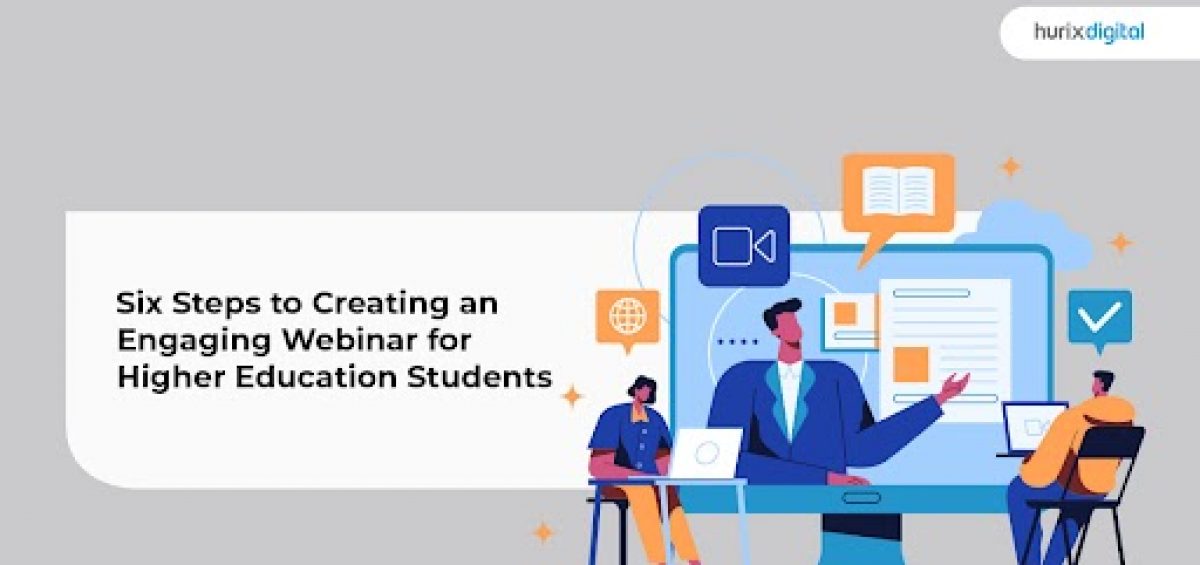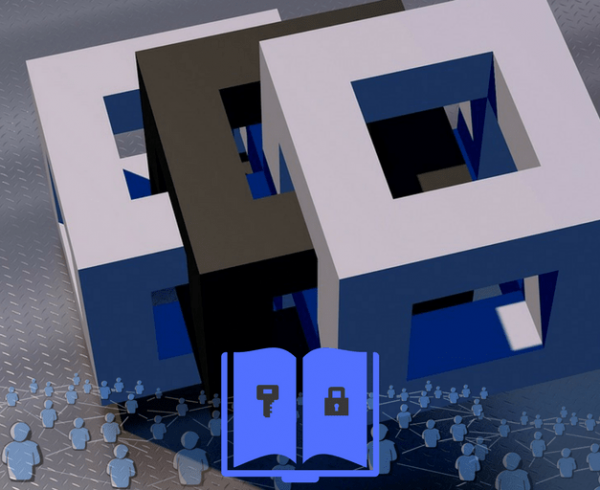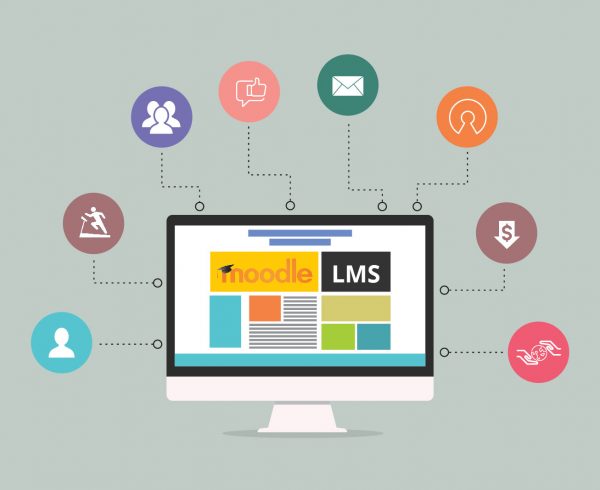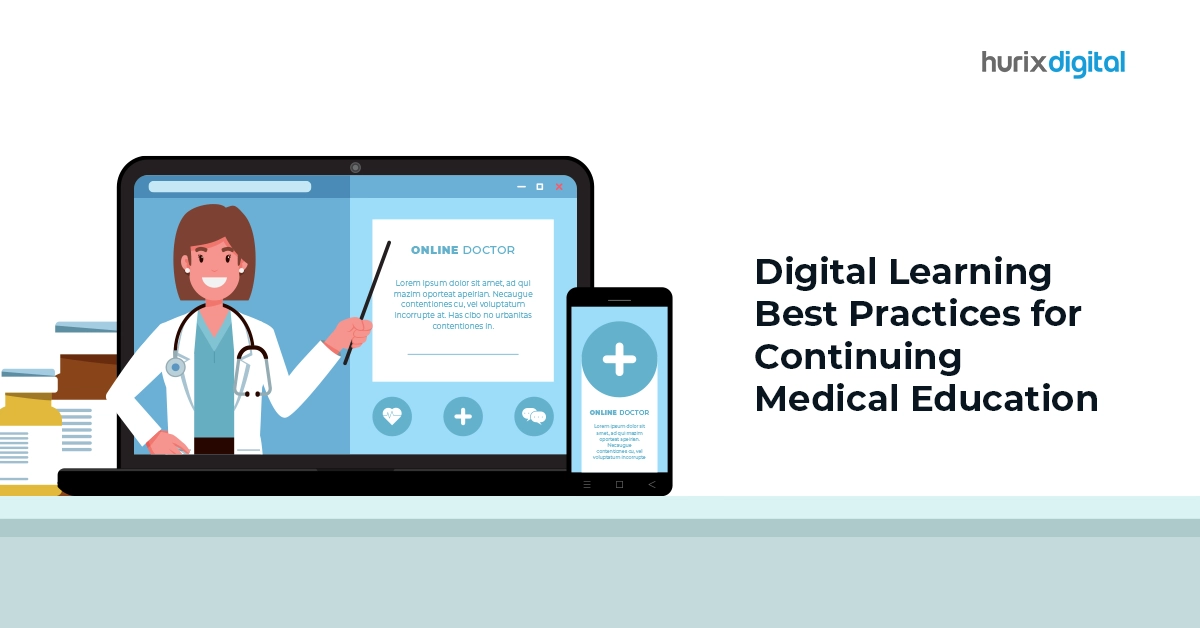A webinar for higher education students is perfect for delivering real responsive teaching. When designed effectively and combined with other learning mediums, a Webinar is a much-needed element for student-faculty interaction and an opportunity to accomplish various objectives like setting expectations of an online course, query-resolution, and even in tying up dispersed learning (of a lesson or topic) holistically.
In this blog, lets look at how to create a webinar that keeps the higher education students engaged.
Table of Contents:
- How to plan an effective webinar for higher education students?
1. Compliment Your Webinar with Pre-reads or Homework
2. Use Your Webinar Time Judiciously
3. Webinar Tools Are Plenty; Take Your Pick - How to Conduct the Best Webinar for Higher Education Students and Learners?
1. A Good Class Size
2. Bring Out the Person in You
3. Dual Coding & Concrete Examples
4. Keep it Short And Worthy - Six Steps to Create a Great Webinar
How to plan an effective webinar for higher education students?
A webinar can and should be an active learning classroom; its purpose is to fulfill the student’s need for direct interaction with the faculty. Here’s how to plan a perfect webinar for higher education students in 2023 –
1. Compliment Your Webinar with Pre-reads or Homework
For a student to be engaged, pages of text or an hour-long video are not the best idea. Divide your lesson or topic into varied formats like discussions, collaboration, video and audio clips, hands-on exercises with text, and possibly brief video lectures. We recommend presenting information in 10-minute “chunks.”
2. Use Your Webinar Time Judiciously
Now think about what do you usually use your in-class time for? We’d say you define it at a more goal-oriented level like presentation of content or checking for understanding, or providing feedback for collaborative project work; this will be more effective than just jotting lecture, quiz, and discussion. This mini-reflection should help you decide the agenda for your synchronous means of engagement.
When you have more than a webinar for your lesson or topic, be sure to communicate to students about what they are responsible for doing before the webinar — exercises to be completed, audio-video lectures to be viewed, or contribution in discussion forums.
3. Webinar Tools Are Plenty; Take Your Pick
With regards to tools, new and enhanced communication methods, such as Skype, Zoom, FaceTime, Microsoft Team Builder, GoToMeeting, and other virtual meeting tools, are all readily available, at low-cost—and they work.
Zoom is one of the most used online video conferencing tools right now. It’s easy to use and the video and audio quality is quite good. It incorporates all the features necessary to conduct meetings, lectures, and presentations. However, there have been some privacy issues involved with Zoom. Many meetings were leaked on to the web, so if you have to be mindful of data security, think again and choose the platform responsibly.
GoToWebinar option is great if you would like to track a lecture or presentation. However, the chat feature is not very well designed, and could be an inconvenience during group discussions.
Google Meet is Google’s video conferencing app within G suite. This option will be especially convenient if you and your audience have and actively use Gmail accounts. This way, there will be no need for any downloads from the web.The easy-to-use interface that is fully integrated with other G Suite apps like Google Calendar allows people to create and drop in and out of meetings quickly, just by clicking a link.
WebEx has a separate section – WebEx for education, where one can find many great materials on each step of creating and managing a virtual classroom.
For complete courses and programs, learning management systems (LMS) such as Canvas, Blackboard, D2L, and Moodle, are available. They work well to integrate online functionality into college and university distance and online learning programs.
Read More: Creating personalized learning paths for higher education students.
How to Conduct the Best Webinar for Higher Education Students and Learners?
In a webinar, you can elaborate on questions that students may have posed on other platforms.
In fact, if your webinar software allows adding quizzes or survey questions, you can ask students to explain their stand, for example, “Why did you choose option A?” Such discussions build engagement and help keep the conversation on track through interactive feedback. Let’s see how you can conduct a proper webinar:
1. A Good Class Size
Let’s start with the basics; 20 to 30 students are the perfect size for an online class. If your group is too large, some students will not ask questions or participate in discussions similar to the traditional lecture halls.
2. Bring Out the Person in You
So your group is connected, and you are ready to begin; before you jump in with your agenda, break the ice. If you are conducting the webinar as the faculty of an online course, engage in some informal conversation with your students every time you meet them virtually— tell them which books you are reading or mention something interesting that happened over the weekend.
Students should know who their teachers are as people. This practice becomes more significant during the pandemic when your students are distanced and new to the virtual medium; share with them your struggles and coping mechanism.
3. Dual Coding & Concrete Examples
Let’s now move into the core time of your webinar. Whether it’s presentation of content or a recap-cum-summary class, two tips will definitely ensure high engagement levels—use of multimedia and examples.
Two of the six strategies for effective learning, as given by the Learning Scientists are Dual Coding and Concrete Examples. Dual coding calls out the use of words and visuals; make your slides relevant by using text and images. In your webinar, use specific examples to explain abstract or complex concepts and provide as many examples as possible in your discussion and questions.
4. Keep it Short And Worthy
Time your webinar (more than an hour is a strict no). The limited availability or scarcity of the webinar is one of its greatest strengths. Because scarcity increases the students’ sense of urgency to participate, and they meaningfully participate in the webinar. In social psychology, this influencing power is called the ‘scarcity principle.’ In doing so, you don’t just motivate students to participate in the webinar, but all the activities.
For all the benefits that webinars offer, they are not as good for giving learners control over the content, breaking into parts, or accessibility. However, with the above tips, you can make the most of this medium to improve the online learning journey of your higher education students.
Six Steps to Create a Great Webinar:
- Class strength should be of 20 to 30 students only
- Break the ice with students
- Use words + visuals and examples
- Limit your webinar time to 60-90 minutes maximum
- Use webinar time for meaningful interactions like query resolution, constructive feedback, etc.
- Provide exercises, video lectures and/or text reading, etc. before or after the webinar
Need to know more about our products and services? Drop us a note at marketing@hurix.com











